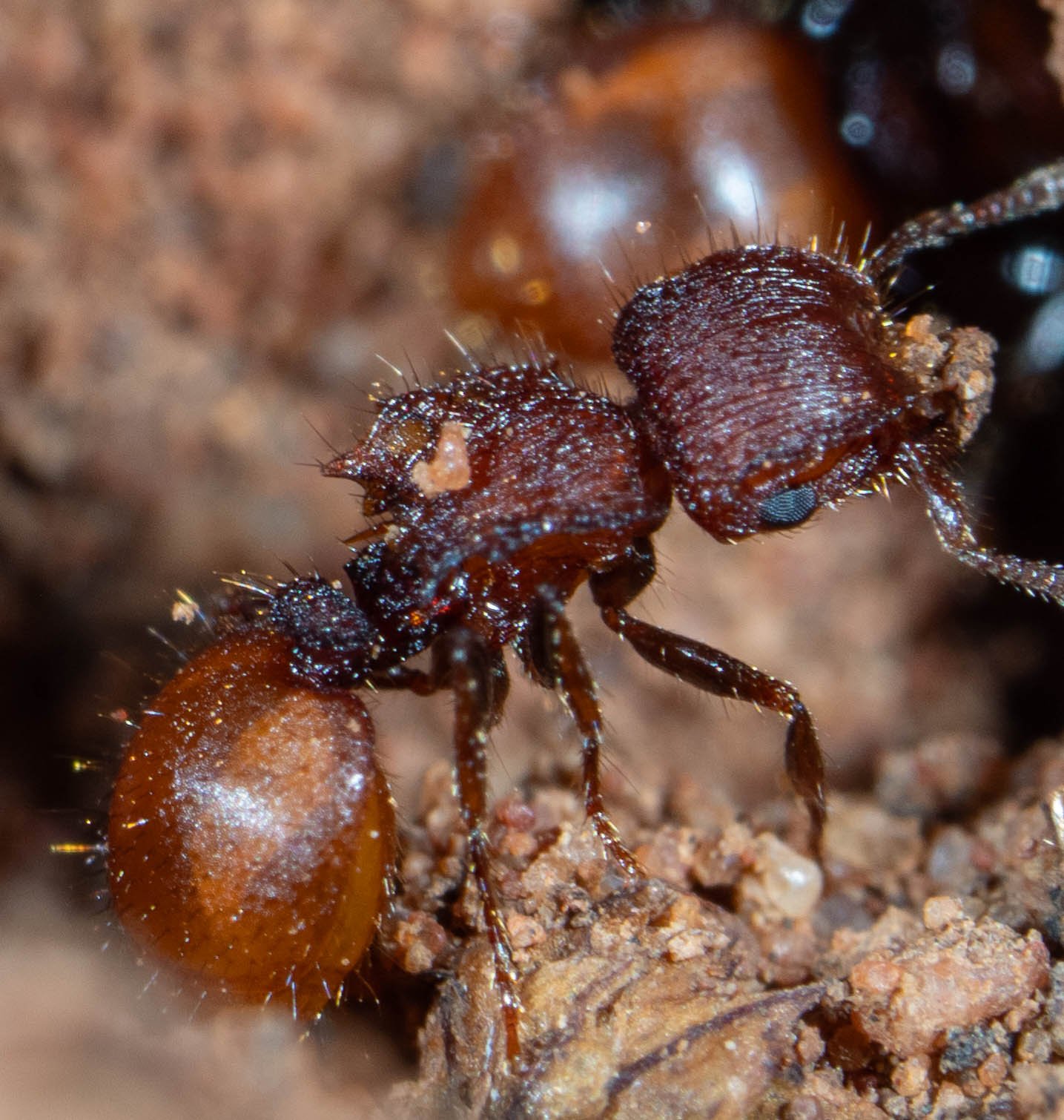
Rarely present in large numbers, these slow-moving ants are small and remarkably cryptic. When disturbed they 'play dead', curling into a ball with their antennae tucked away into grooves on their head. Soil caught in the hairs of their body provides further camouflage.

I'm sure I would have overlooked these little ants if Louise hadn't pointed them out to me. Their unusual appearance and behaviour had caught her attention some time ago, and she was curious to know more about them.
I was totally unfamiliar with them. Indeed, they tend to be uncommon in forests of the cool temperate zone (ref. 7). We have certainly never seen them in our home patch of SE NSW.
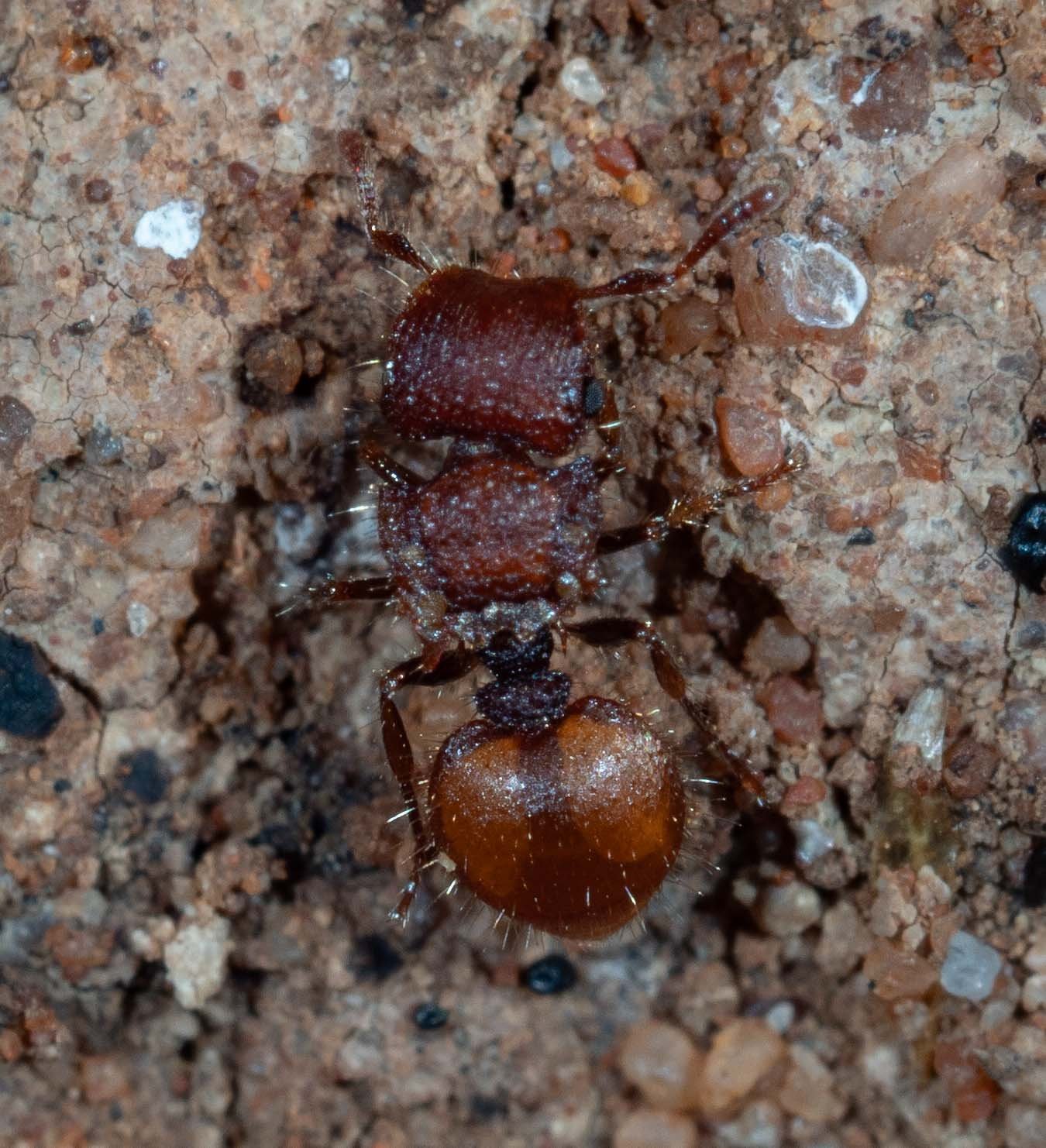
The broad plate covering much of the thorax lends the group their common name of 'shield ants'. It typically overhangs laterally and posteriorly, with various spines and translucent plates, depending upon the particular species.

Meranoplus nest underground in small colonies of around 150 workers. A colony usually has a single queen, but some small colonies may be queenless ... probably satellite nests arising from a 'queenright' colony, which may be many metres away (ref. 6)

Most shield ants are generalist omnivores, foraging on the ground and opportunistically taking seeds (ref. 7).

These distinctive, funnel-shaped nests are instantly identifiable as the work of Aphaenogaster ants.
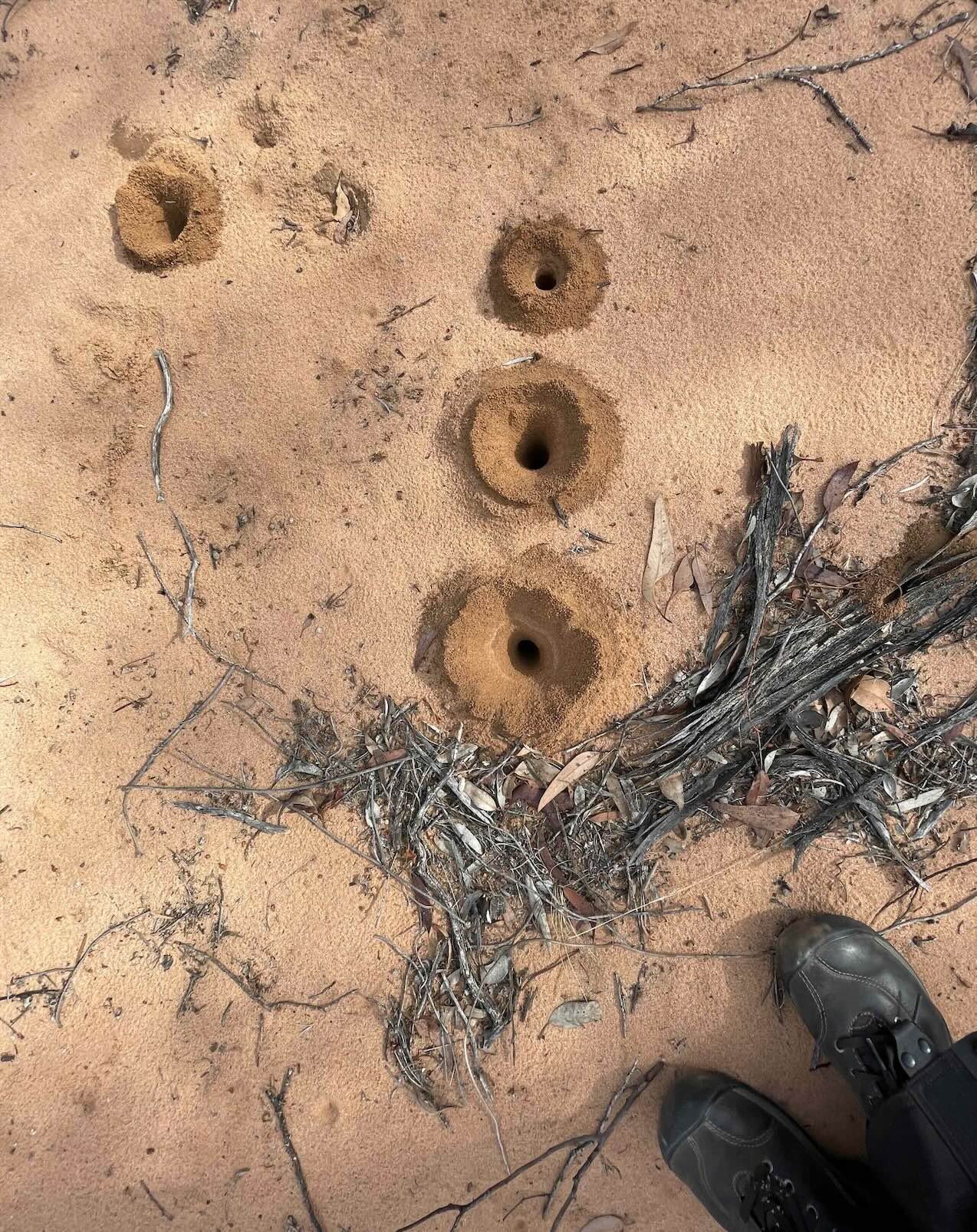
They are large mounds, with very wide, round openings. Here my shoes provide scale (and I don't have small feet!)
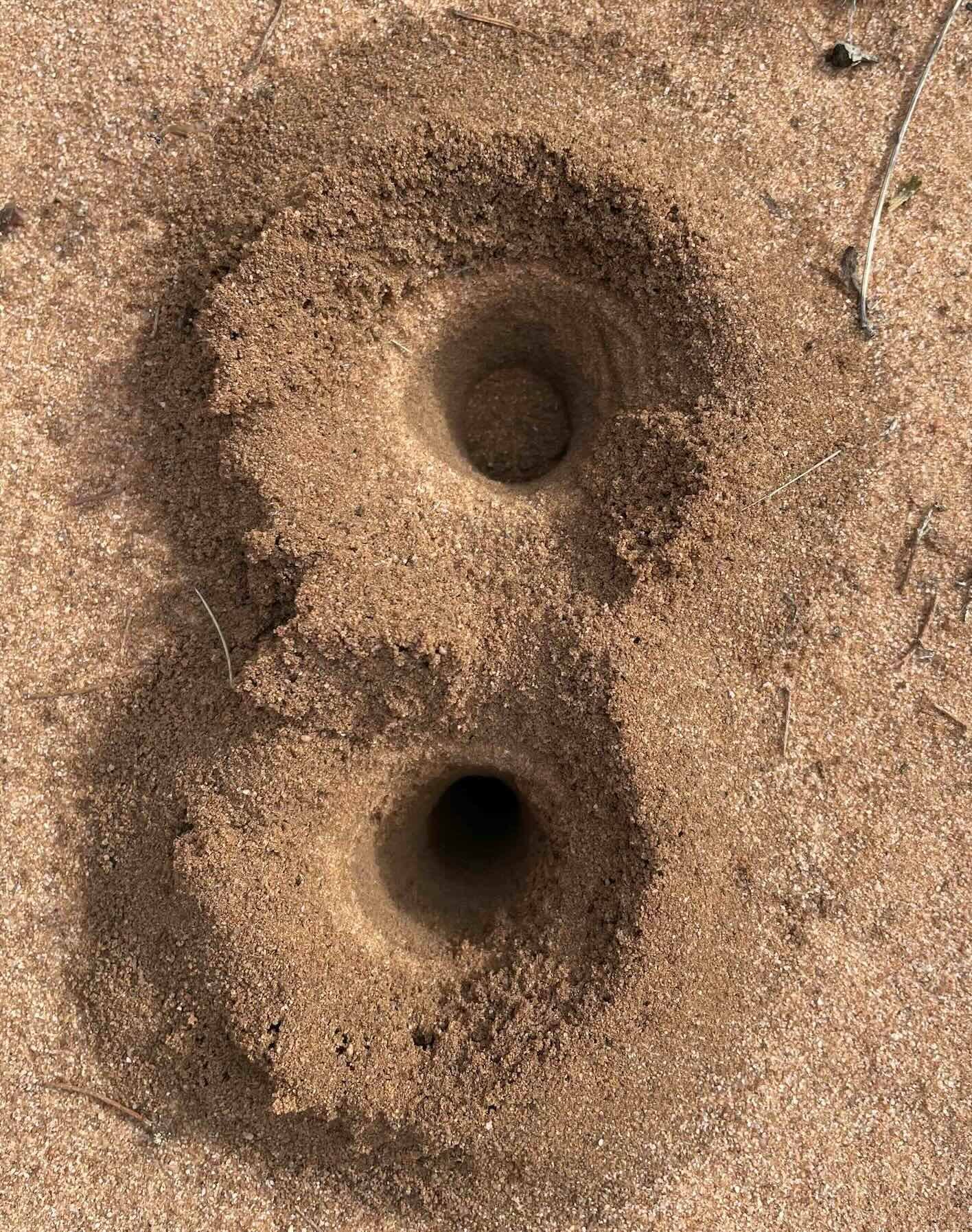
Wandering insects that climb the outer wall are likely to fall directly into the opening ... and become food for colony. I'm not sure why one of these was closed. Perhaps an landslide caused by a passing large animal (not me!). Or maybe the ants sometimes close the burrow from within. A bit of a mystery, for now.
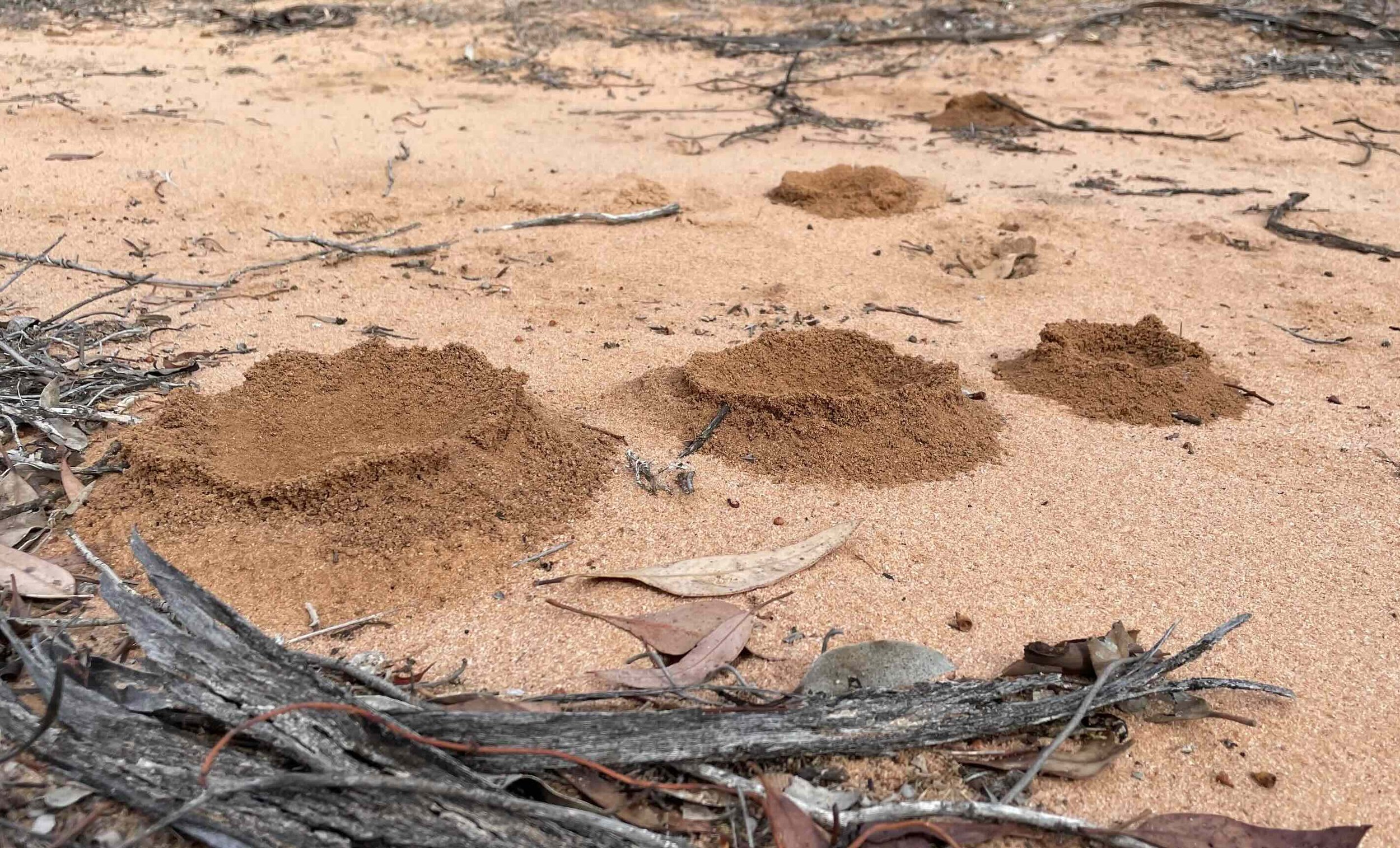
This species is typically found in habitats with at least some trees and shrubs, such as Callitris and mulga (Acacia) woodlands, and mallee (ref. 8). That fits with where I saw these ants, along a trail through quite dense bush.
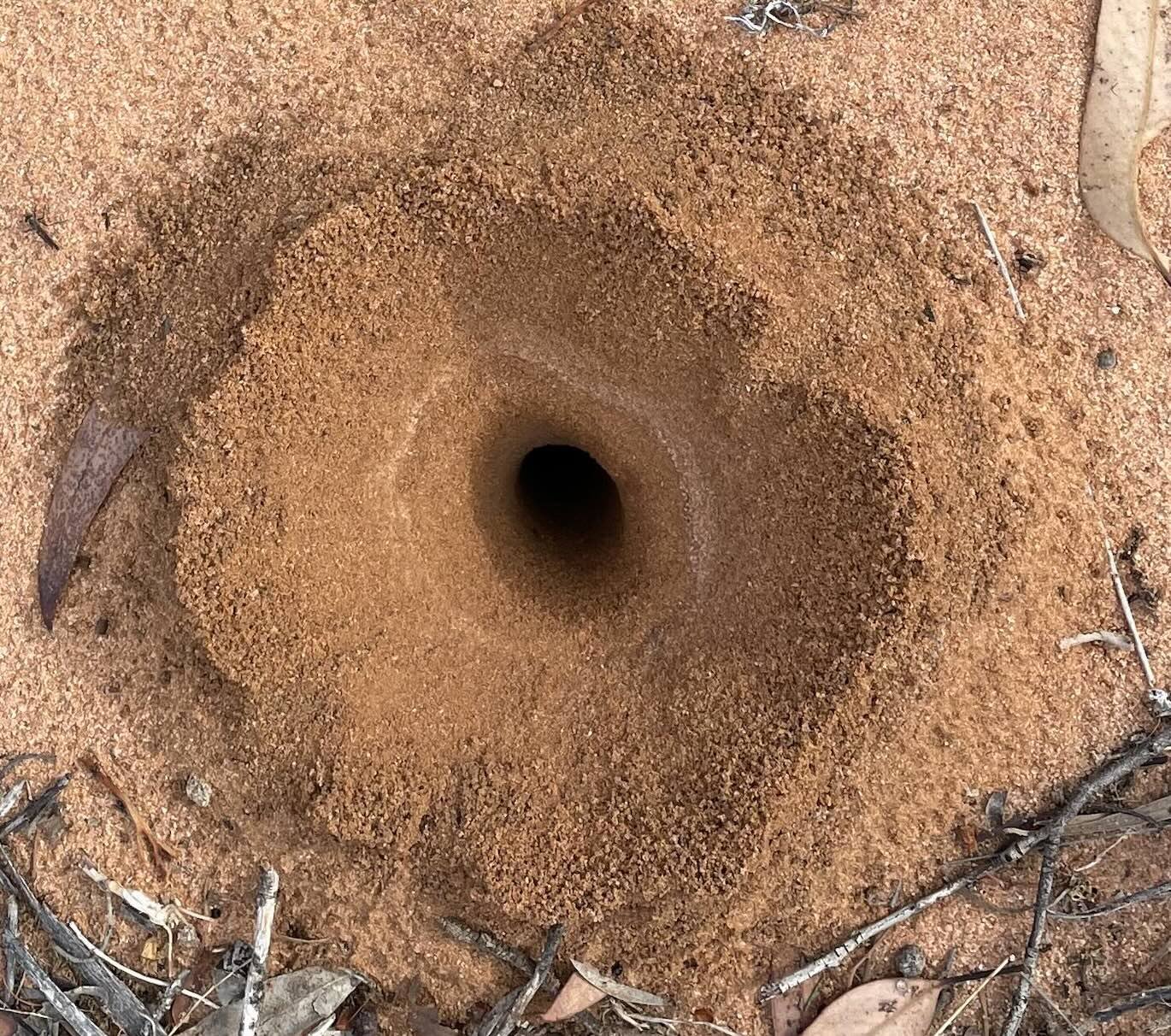
Many mounds ... but not an ant in sight! Apparently this is quite typical for Aphaenogaster (ref. 8). Colonies may be quite large, yet workers are seldom seen above ground ... and even those that venture out do not go far from home. These ants don't need to forage. They tend aphids feeding on plant roots and/or they just wait for food to fall tumble in through the funnel.

Late in the day I came across a large funnel with several workers active at the surface. I collected one for identification.
Australia has eight species of these 'funnel ants'. Aphaenogaster barbigula is found in semi-arid parts of eastern Australia ... including north-western Victoria (ref. 8). The arrangement of hairs beneath the head is a clue to the species identity.
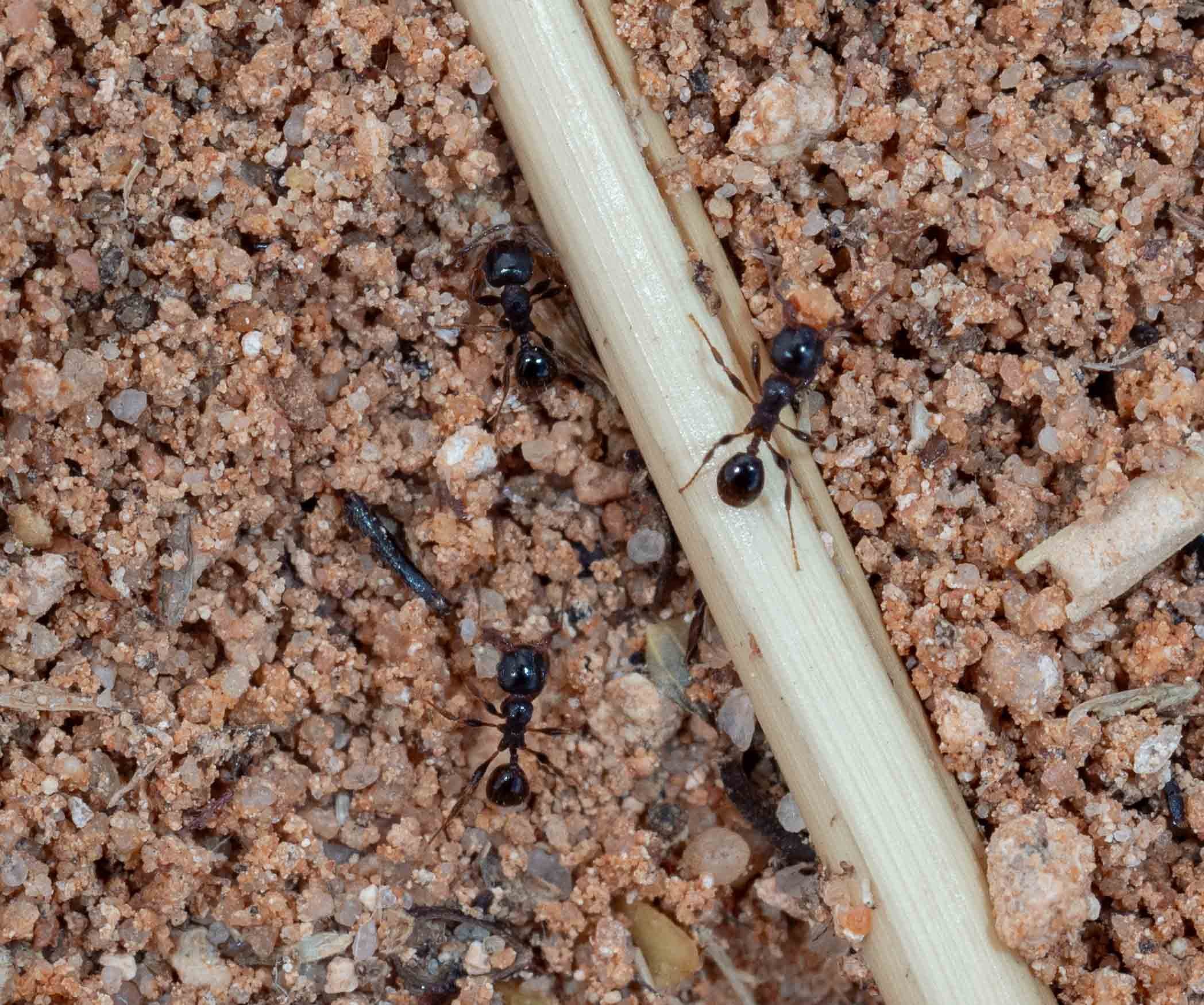
Tiny (<3mm long) and quite slow moving as they carted grains of sand from their nest opening to the small, surrounding mound.












